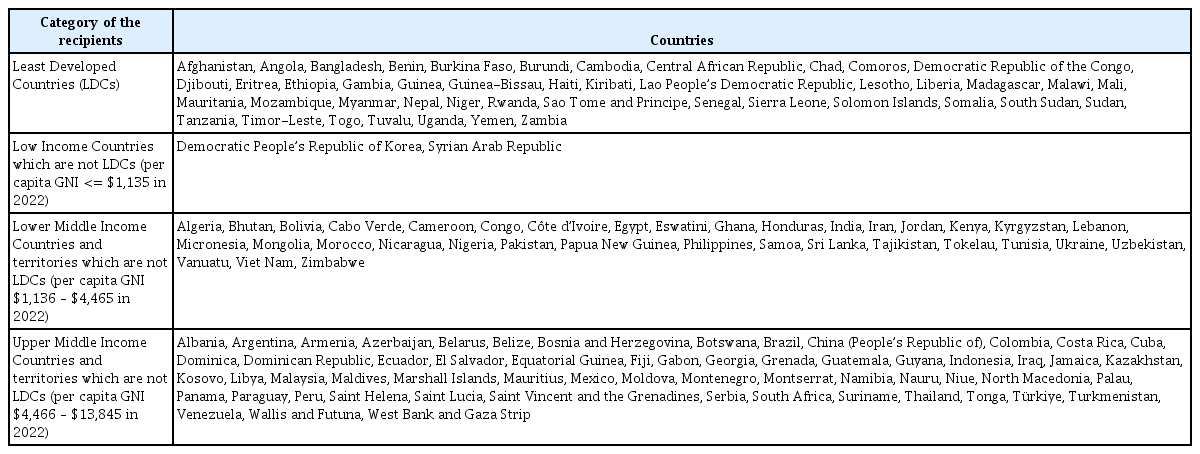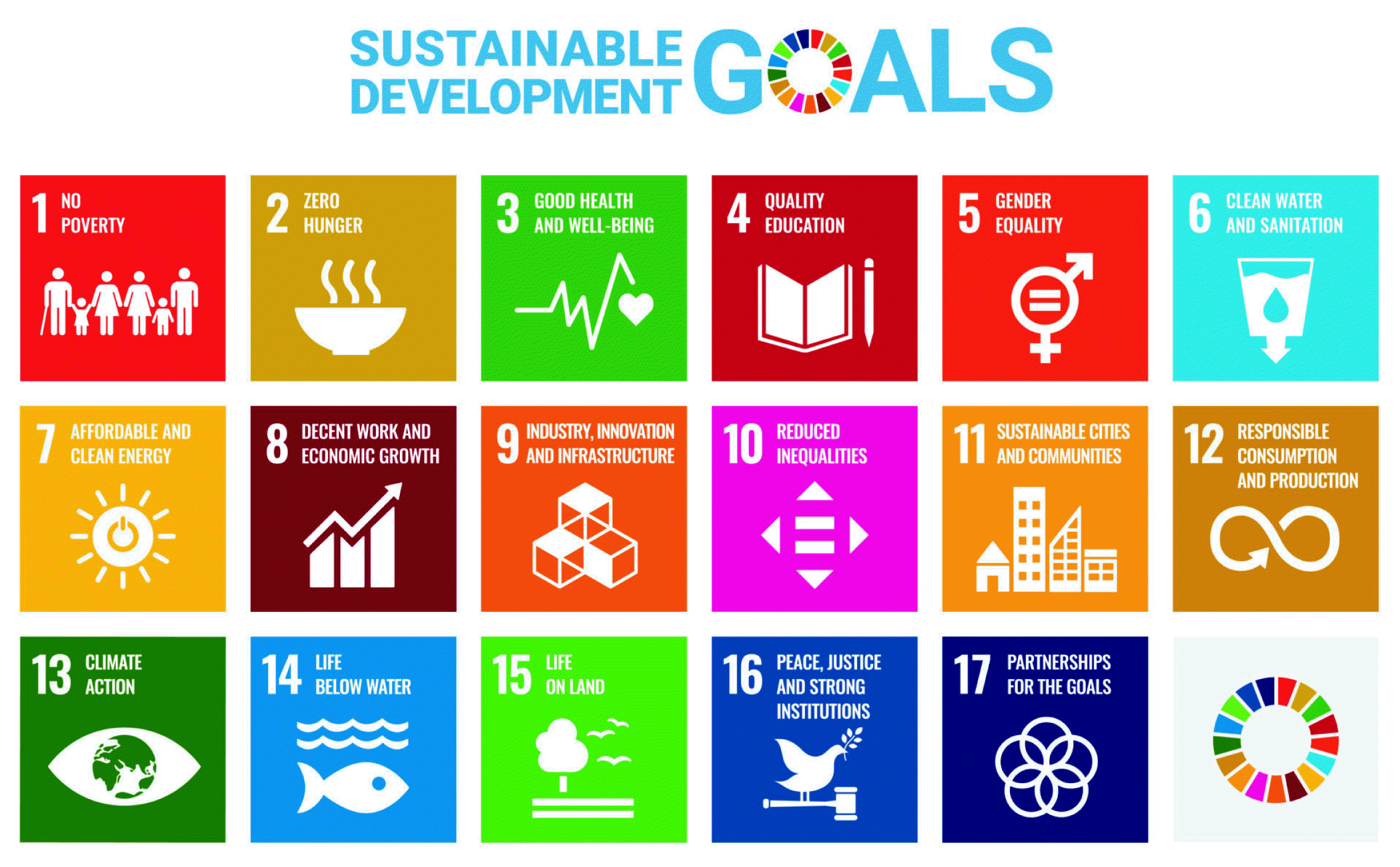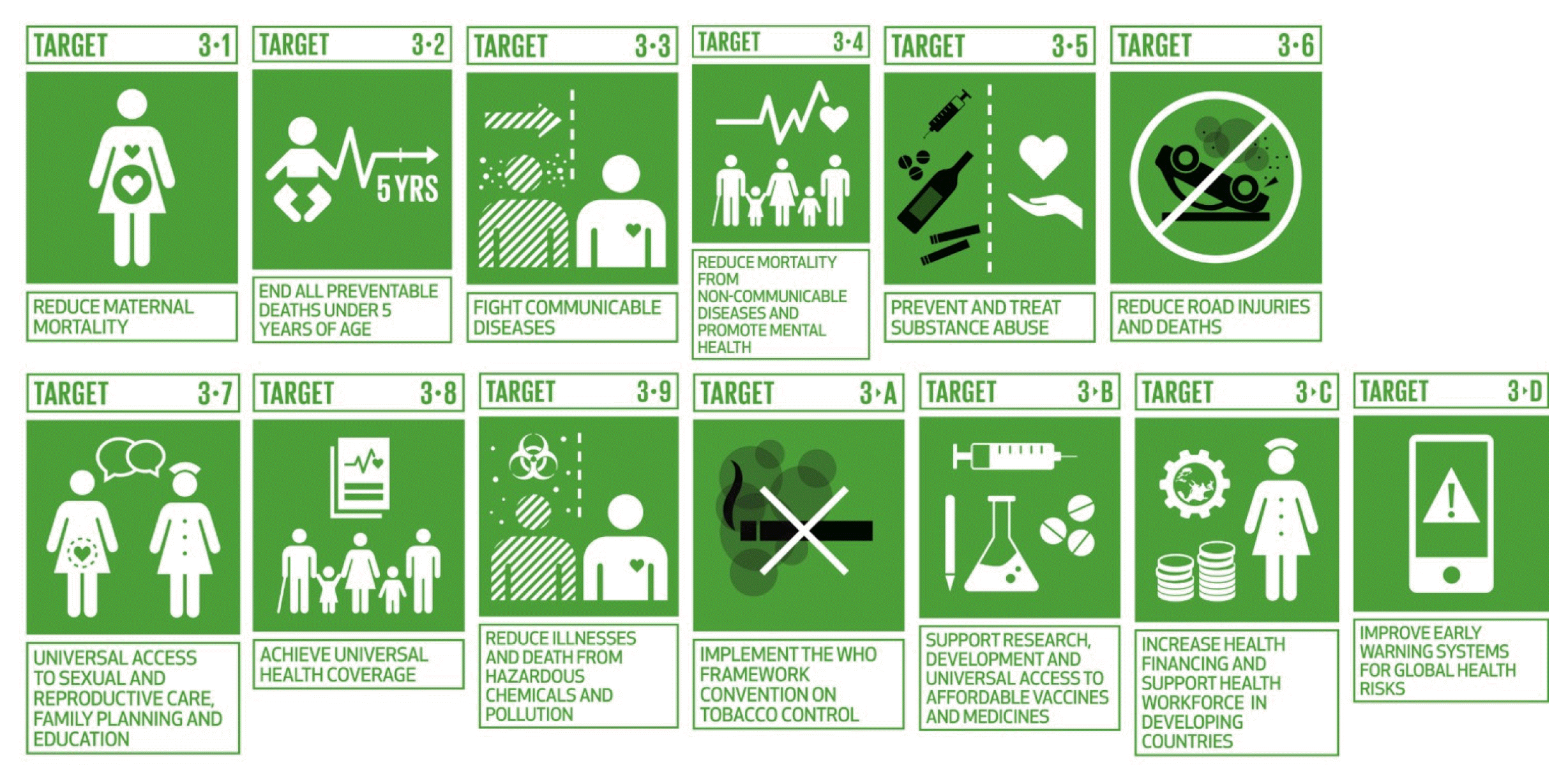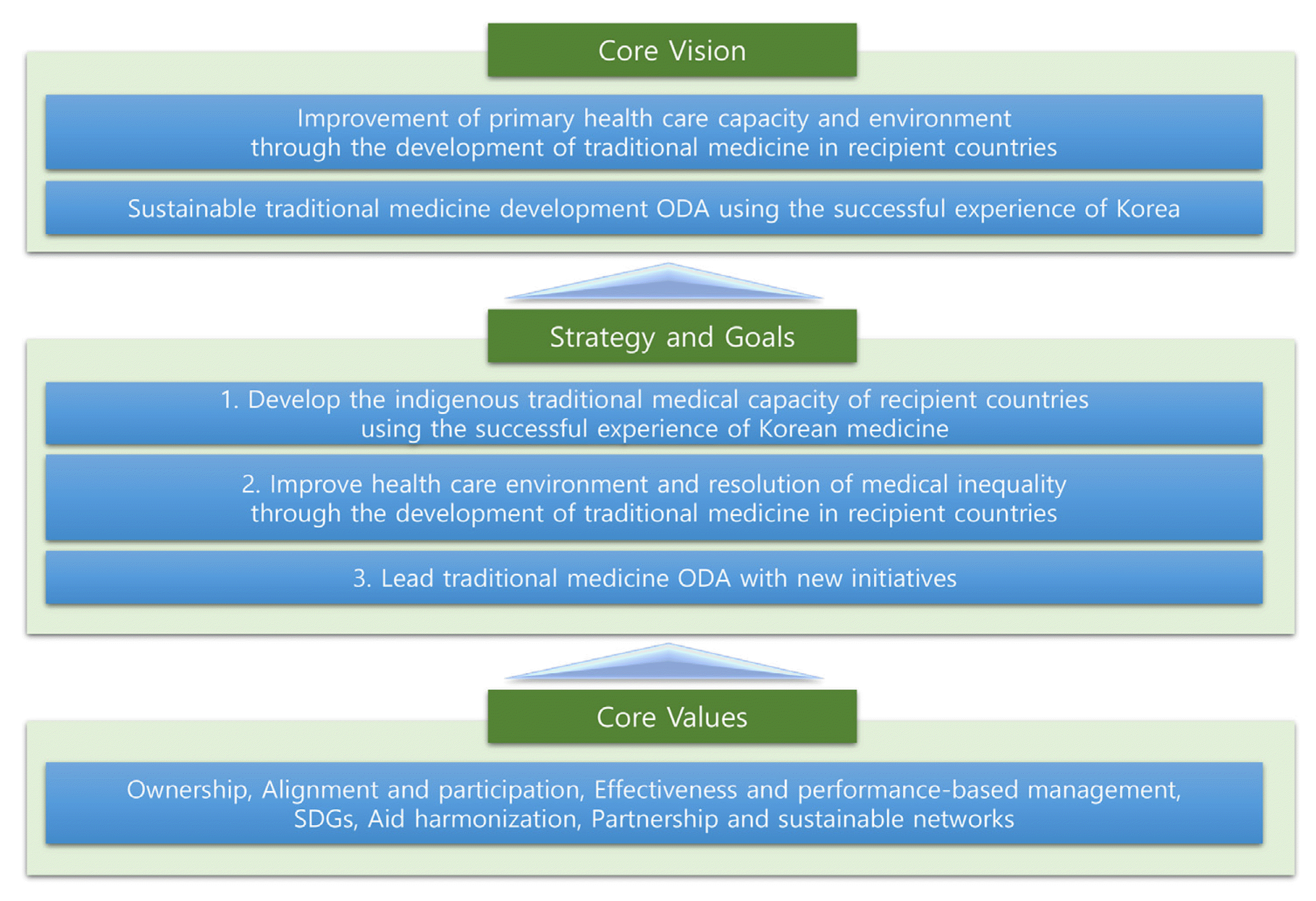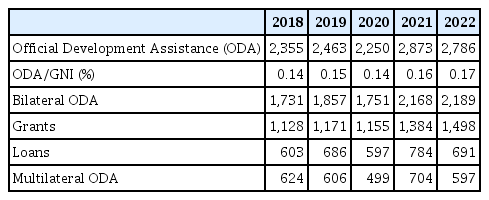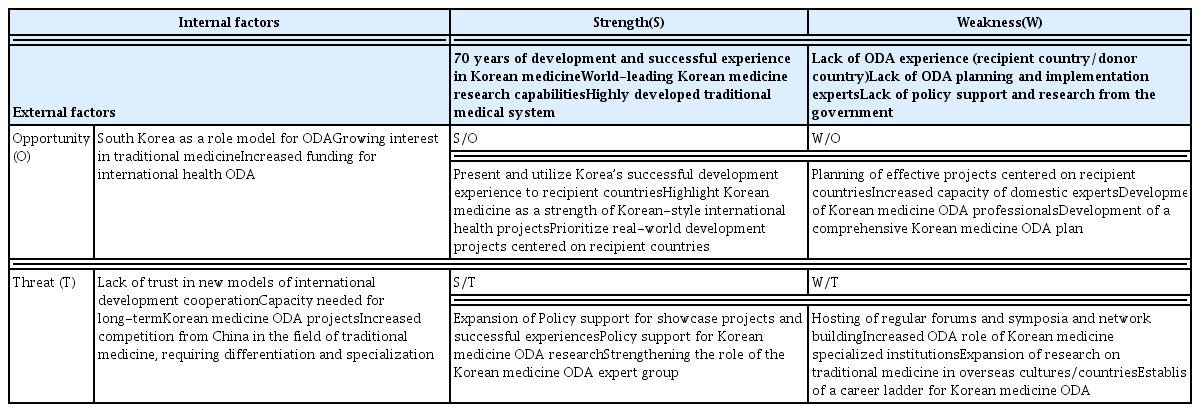References
4. Kim S. J., Jeon H. E.. 2022;Categorization of Korean education ODA development plan: Focusing on previous researches. Journal of Education for International Understanding 17(3):129–162.
https://doi.org/10.35179/jeiu.2022.17.3.129.
5. Jang J.-H.. 2020;Discovering the main issues and feedback loops underlying the education-related ODA projects. Korean Comparative Government Review 24(4):1–19.
https://doi.org/10.18397/kcgr.2020.24.4.1.
6. Lee S.-W., Lee Y.. 2021;The international developmental cooperation and cultural official development assistance in South Korea. The Journal of Cultural Policy 35(1):191–225.
https://doi.org/10.16937/jcp.2021.35.1.191.
9. Lee S.. 2021;An analysis of current situation about capacity building strategy for health sector in Korea’s official development assistance (ODA): An empirical study using qualitative research method. Journal of International Development Cooperation 16(1):33–57.
http://doi.org/10.34225/jidc.2021.16.1.33.
12. Yim H. R.. 2023;The impact of ODA to the economic development of recipient countries from the perspective of resource allocation. The Journal of Eurasian Studies 20(1):113–134.
https://doi.org/10.31203/aepa.2023.20.1.006.
13. Lee J. R., Jung J. H., Kim J.-I., Lee H.. 2020;An analysis of ROK’s ODA researches and projects using text network analysis. Journal of International Development Cooperation 15(2):3–30.
14.
Act on the promotion of Korean medicine
15. Choi C-h. 2011;A study on the development of the Korean traditional medicine tourism industry. Northeast Asia Tourism Research 7(3):227–248.
16. Lee H.-J.. 2013;The globalization of East Asian traditional medicine and the change of medical hegemony. Society and Theory 22(5):377–398.
17. Yu T. G., Kim J. S.. 2015;Overseas entry-type research of the oriental medical institutions. Health Service Management Review 9(2):1–8.
18. Chae H.. 2010;Globalization of traditional Korean medicine: Development of traditional Korean medicine educational curriculum for foreign medical students. Journal of Physiology & Pathology in Korean Medicine 24(6):1068–1076.
19. Ministry of Health and Welfare & Kyung Hee University Research and Business Foundation. 2014;Establishment of comprehensive plan for ODA of traditional Korean medicine
20. Ministry of Health and Welfare & Joint Relevant Ministry. 2021;The 4th comprehensive plan for Korean medicine development 2021~2025
21. Chae H.. 2022;A study on the role of traditional Korean medicine in Korean-style international healthcare ODA policy.
23. OECD. 2021;Official development assistance (ODA)
25. UN. 1970;UN general assembly resolution 2626 (xxv)
26. OECD. 2023;ODA levels in 2022 – preliminary data detailed summary note
27. OECD. 2019;Evaluation criteria: Adapted definitions and principles for use
28. OECD. 2019;Better criteria for better evaluation
30. UN. 2022;The sustainable development goals report 2022
32.
Framework act on international development cooperation
34. Joint Relevant Ministry. 2021;The 3rd comprehensive basic plan for international development cooperation (ODA) 2021–2025
35. 2020;Enforcement decree of the framework act on international development cooperation
37. KOICA. 2017;KOICA’s mid-term sectoral strategy 2016–2020
38. KOICA. 2021;KOICA’s mid-term sectoral strategy 2021–2025
39. KOICA. 2023;KOICA’s 2022 ODA performance statistics
40. Macinko J. A., Starfield B.. 2002;Annotated bibliography on equity in health, 1980–2001. International Journal for Equity in Health 1(1):1–20.
41. WHO. 2023;World health statistics 2023: Monitoring health for the SDGs, sustainable development goals
43. Lee M.-S.. 2018;Global health promotion efforts for achieving the UN 2030 agenda for sustainable development. Korean Journal of Health Education and Promotion 35(4):1–18.
https://doi.org/10.14367/kjhep.2018.35.4.1.
44. OECD. 2022;List of CRS purpose codes and voluntary budget identifier codes
45. UN. 2023;The sustainable development goals report 2023: Special edition
47. Lee J., Song J., Yoo A.. 2020;Current state and implication of ODA in international society’s response to infectious disease
50. KOFIH. 2023;2022 Project performance report
51. KOFIH. 2023;Revised project plan and budget proposal for 2023
52. Joint Relevant Ministry. 2023;The proposed 2024 comprehensive implementation plan for international development cooperation (based on request amount)
53. Joint Relevant Ministry. 2023;The 2023 comprehensive implementation plan for international development cooperation (draft) (confirmed amount basis)
54. Kim H-k, Kang S., Noh D., Lee H., Jun J., Kang S-w, et al. 2015;Ways to vitalize ODA for health and social protection Korea Institute for Health and Social Affairs;
55. Choo Y.. 2012;A smart power strategy for providing ODA (official development assistance): Focused on aids to health in Cambodia. The e-Business Studies 13(2):159–184.
56. Choo M.. 2021;The current state and challenges of Korea’s international healthcare ODA. medical news
57. Joo H-j. 2023;KOMSTA, pre-ODA training for overseas medical volunteers
58. KOMSTA. KOICA WFK-KOMSTA dispatching Korean traditional medical volunteer team Accessed date 2024.1.10. Available from:
https://komsta.org/overseas.
59. Kim T-h. 2021;The association of Korean medicine-KOICA, cooperate to increase the role of global partnership Korean doctors
60. KOFIH. 2017;ODA project evaluation manual for practitioners
61. OECD. 2013;OECD development assistance peer reviews: Korea 2012
62. WHO. 2009;WHO drug information
